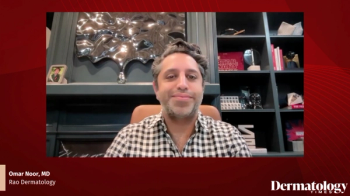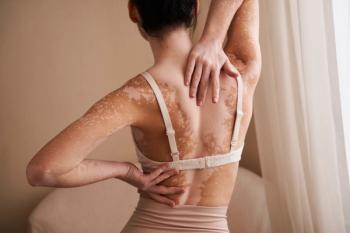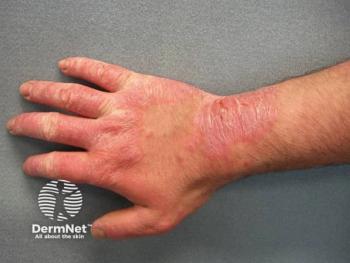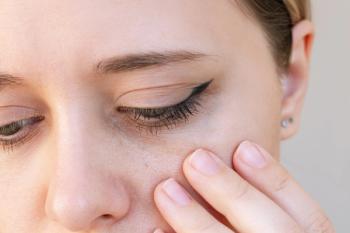
Immunocompromised Patients with Actinic Keratosis Respond Well to LED Daylight Photodynamic Combination Therapy
Key Takeaways
- Combining LED illumination with daylight photodynamic therapy significantly reduced actinic keratosis lesions in immunosuppressed patients.
- The study showed higher complete and partial response rates with the combined treatment compared to daylight therapy alone.
Solid organ transplant recipients saw a 79.6% decrease in lesions 12 weeks after the treatment sessions.
Researchers tested the combination of posterior LED illumination and daylight photodynamic therapy for actinic keratosis in immunosuppressed solid organ transplant recipients.1 Patients saw a 79.6% reduction in lesions 12 weeks after the treatment sessions.
The prospective, randomized, comparative, intra-patient study took place at the Department of Dermatology of the University of Navarra Clinic in Spain between January 2023 and June 2024. All included participants (n = 13) had 2 25 cm2 areas on the face or scalp with 4 or more actinic keratosis lesions. The sample included men between the ages of 49 and 87, with a mean age of 69.2 years. Over half of the patients had a skin phototype of III. A total of 169 clinically confirmed actinic keratoses were included.
Each patient received photodynamic therapy, but about half were randomized to receive additional LED illumination. Treatments were not interrupted for any reason, and the lamp did not need to be adjusted at any time. Photodynamic therapy involves applying a photosensitizing agent before applying a blue or red light source, killing tumor and precancerous cells.2 It is the most extensively studied therapy for the prevention and treatment of actinic keratosis, with the highest complete response rates.3
The subtype of daylight in photodynamic therapyactivates the photosensitizer and is proven to reduce pain levels and increase tolerance in patients without sacrificing efficacy. Adding the LED illumination could be more effective, according to recent research.
The reduction in actinic keratosis 3 months after treatment was established as the primary endpoint. Investigators also compared complete response (100%) versus partial response rates (≥ 75%). Local skin response including erythema, scaling, crusting, swelling, vesiculation, and ulceration, was observed based on a 24-point scale. Overall pain levelsand patient preferences were also noted.
After 12 weeks of treatment, the group that was treated with both photodynamic therapy and LED illumination saw a greater reduction in baseline lesions (79.6% vs. 65.4%, p < 0.05). This outcome is comparable to previous studies, especially considering the vulnerable patient population. Complete and partial response rates were also higher in those patients.
Areas that were treated with LED and daylight photodynamic therapy showed higher local skin responses (4.6 ± 2.1 vs. 3.9 ± 1.7) and a low increase in pain during the illumination step, when compared to those that just received daylight photodynamic therapy (VAS: 2.1 vs. 0.1, p < 0.05). All levels remained low and lacked statistically significant differences, indicating that the therapy was well-tolerated.
At the 3-month follow-up, researchers found a moderate correlation between the local skin response and the percentage of actinic keratosis reduction. Almost 100% of patients rated their treatment as good or very good. However, nearly 85% had no preference for either method. Only 2 patients stated that they preferred daylight photodynamic therapy on its own.
“This increase in effectiveness could be attributed to the residual protoporphyrins remaining after daylight photodynamic therapy in some patients, which may be activated during the additional LED illumination phase,” the authors wrote.
The trial does have some limitations, such as the small sample size, use of a single center, and lack of long-term data. Additionally, only the total number of lesions was measured, rather than the individual resolution of each. Future, more controlled studies can gather more data for this therapy in a patient population that can often be hard to treat.
References
1. Oteiza-Rius I, Morelló-Vicente A, Aguado-Gil L, et al. Combination of LED illumination and daylight photodynamic therapy for the treatment of actinic keratosis in solid organ transplant recipients: a prospective, randomized, comparative, intra-patient study. J Dtsch Dermatol Ges. Published online April 14, 2025. doi:10.1111/ddg.15665
2. Gellén E, Fidrus E, Péter M, Szegedi A, Emri G, Remenyik É. Immunological effects of photodynamic therapy in the treatment of actinic keratosis and squamous cell carcinoma. Photodiagnosis Photodyn Ther. 2018;24:342-348. doi:10.1016/j.pdpdt.2018.10.018
3. Perrett CM, McGregor JM, Warwick J, et al. Treatment of post-transplant premalignant skin disease: a randomized intrapatient comparative study of 5-fluorouracil cream and topical photodynamic therapy. Br J Dermatol. 2007;156(2):320-328. doi:10.1111/j.1365-2133.2006.07616.x
Newsletter
Like what you’re reading? Subscribe to Dermatology Times for weekly updates on therapies, innovations, and real-world practice tips.



















